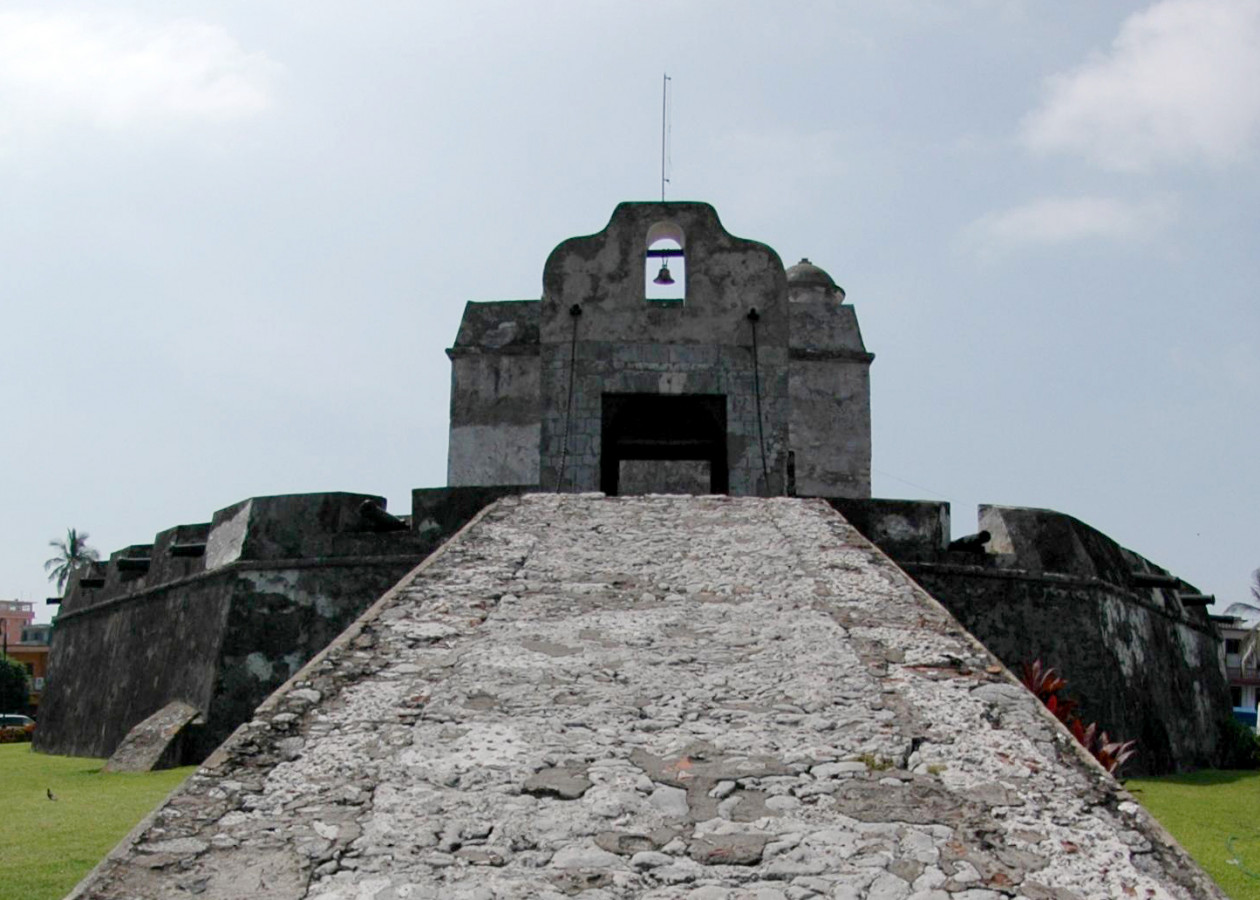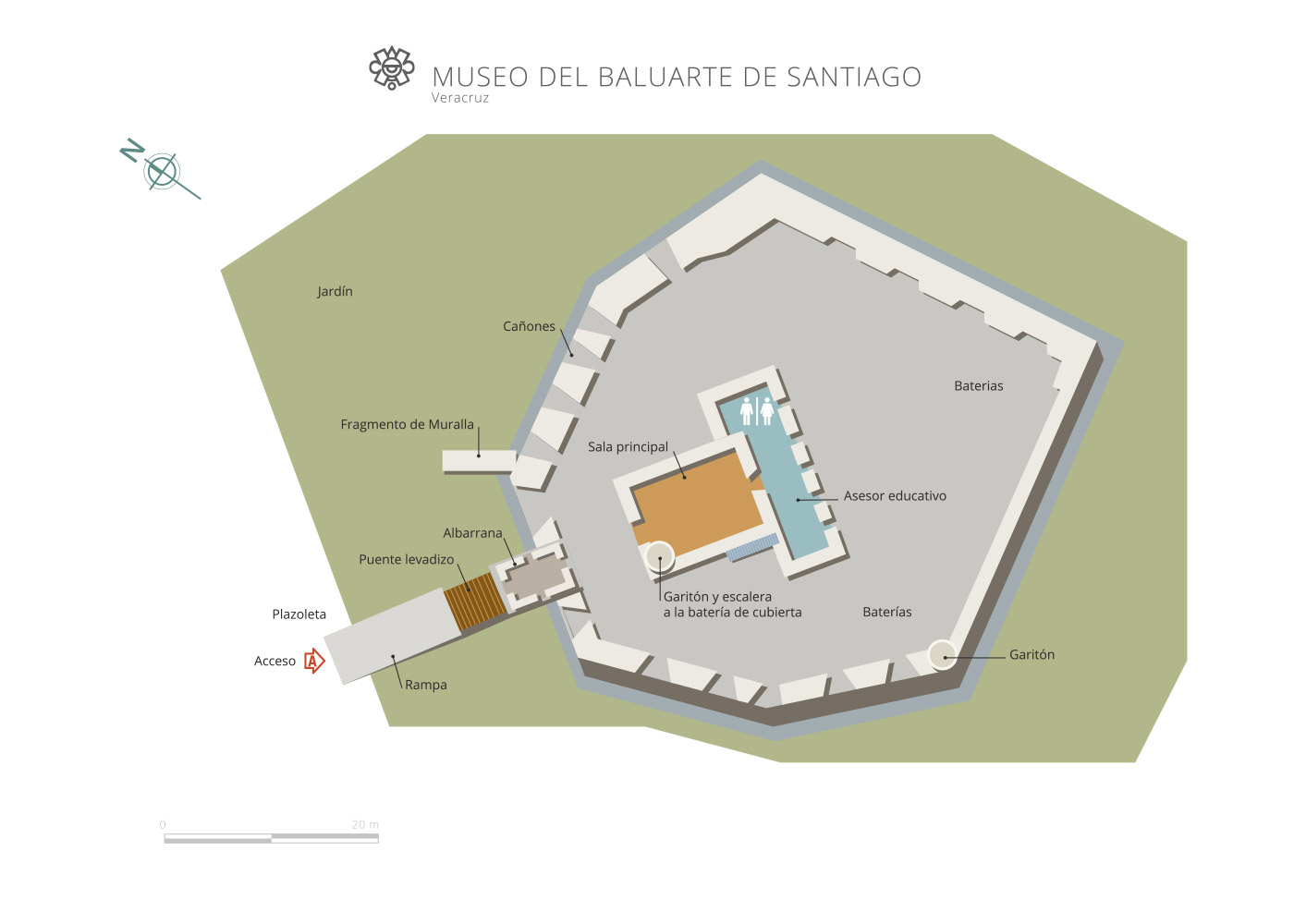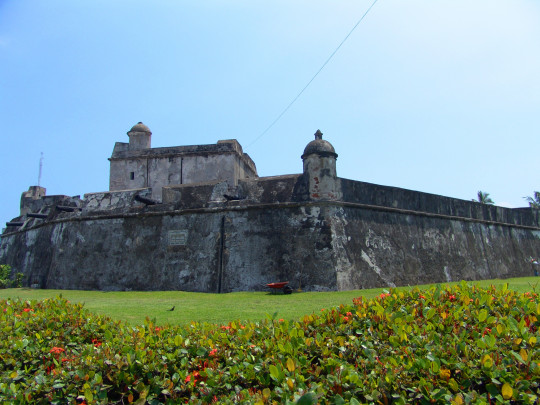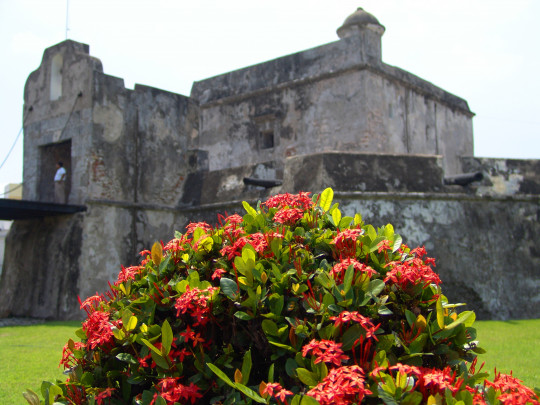Museo Baluarte de Santiago
Part of the old wall defending the port of Veracruz against pirate attacks. The bastion of Santiago is the only surviving bastion. It houses and displays the “fisherman’s jewels,” a notable collection of pre-Hispanic gold and silver pieces found by a Veracruz fisherman.
Local
About the museum
The Bastion of Santiago was part of the wall which protected the port of Veracruz. It is the only bastion to survive the destruction of the wall. Built in 1635, a plaque of the same date bears this inscription: “Philip IV, who God protects, reigns over the Spains, and the Viceroy of New Spain is His Excellency Don Rodrigo Pacheco Ossorio Marqués de Zerralvo, Mayor appointed by the King, Captain at war and Superintendent of the mills of His Majesty in this city [of Veracruz], the Castilian Don Alonso de Gusmán, built this bastion in the year 1635.”
It came under the military chief of the port. Later on it came under the command of the viceregal army, then the national army. It was a witness to important historical events as it was against its walls that the first Veracruz rebels were shot on July 29, 1812, all young men aged 17 to 22: José Prudencio Silva, Bartolomé Flores, José Nicasio Arizmendi, José Ignacio Murillo, Cayetano Pérez and José Evaristo Molina. It also witnessed bombardments by the United States in the invasions of 1847 and 1914.
It holds 100 pieces of valuable pre-Hispanic gold and silver work in their original state. The museum’s main gallery is in the vault of the old powder store, and this is where the pre-Hispanic treasure rescued in 1976 by the fisherman Raúl Hurtado is displayed. It is the best preserved collection of pre-Hispanic gold jewelry known today, with highlights including a chimalli (shield) decorated with spears and rattles, earrings with turtle heads, bangles with figures of monkeys and necklace beads in the shape of a snake. Jewelry work with precious metals of the viceregal period are also displayed, all cast with the lost wax method.
The techniques used in the past by the goldsmiths and silversmiths are explained during the visit, as well as the craft organization of the artisans. There is also information on the trafficking of gold jewelry during the viceregal and independence periods. The historical section includes lithographs of Veracruz from the colonial period, and nineteenth-century images, as well as weapons and gold disks bearing a tax seal called the Quinto Real, or the “king’s fifth.” Fragments of a marble ashlar from the defensive wall were built into the bastion’s wall with an inscription of the date of destruction of the defensive wall: 1880. The parapet walk around the battlements of the Bastion displays a collection of historical cannons.
It came under the military chief of the port. Later on it came under the command of the viceregal army, then the national army. It was a witness to important historical events as it was against its walls that the first Veracruz rebels were shot on July 29, 1812, all young men aged 17 to 22: José Prudencio Silva, Bartolomé Flores, José Nicasio Arizmendi, José Ignacio Murillo, Cayetano Pérez and José Evaristo Molina. It also witnessed bombardments by the United States in the invasions of 1847 and 1914.
It holds 100 pieces of valuable pre-Hispanic gold and silver work in their original state. The museum’s main gallery is in the vault of the old powder store, and this is where the pre-Hispanic treasure rescued in 1976 by the fisherman Raúl Hurtado is displayed. It is the best preserved collection of pre-Hispanic gold jewelry known today, with highlights including a chimalli (shield) decorated with spears and rattles, earrings with turtle heads, bangles with figures of monkeys and necklace beads in the shape of a snake. Jewelry work with precious metals of the viceregal period are also displayed, all cast with the lost wax method.
The techniques used in the past by the goldsmiths and silversmiths are explained during the visit, as well as the craft organization of the artisans. There is also information on the trafficking of gold jewelry during the viceregal and independence periods. The historical section includes lithographs of Veracruz from the colonial period, and nineteenth-century images, as well as weapons and gold disks bearing a tax seal called the Quinto Real, or the “king’s fifth.” Fragments of a marble ashlar from the defensive wall were built into the bastion’s wall with an inscription of the date of destruction of the defensive wall: 1880. The parapet walk around the battlements of the Bastion displays a collection of historical cannons.
Map
Practical information
Tuesday to Sunday from 9:00 to 17:00 hrs
$80.00 pesos
Francisco Canal s/n, entre Gómez Farías y 16 de Septiembre,
Colonia Centro, C.P. 91700,
Veracruz, Veracruz, México.
Colonia Centro, C.P. 91700,
Veracruz, Veracruz, México.
Located within the historic heritage area, five blocks from the Municipal Palace.
Services
-
+52 (229) 939 13 30
-
This email address is being protected from spambots. You need JavaScript enabled to view it.
Directory
Administrador
Erick Romero Vázquez
This email address is being protected from spambots. You need JavaScript enabled to view it.
+52 (229) 939 13 30 ext. 388002











